Introductions, Forewords and Afterwords
"The act of creation has, for me, always been driven by a feeling deep in my gut that certain stories need to be told, that the status quo needs to be challenged and that
I have a duty, perhaps even an obligation, to invent anarchic alternatives to the wretched banalities of life as it is barely lived in this over-polished, but under-nourished virtual world we are supposed to be pleasured by.
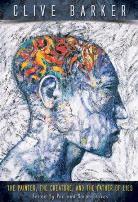 "I have taken my own pleasure in the productions of ink and paint rather than those of a computer, and I've been doing so all my life. I've had my share of commercial success - for which I thank each and every one of you reading this volume; I remain profoundly grateful that you have allowed the images in my head and my heart into your own lives and that they have found some resonance - but I have never taken the commercial route that my publishers and many in this tinsel town would have preferred I trod.
"I have taken my own pleasure in the productions of ink and paint rather than those of a computer, and I've been doing so all my life. I've had my share of commercial success - for which I thank each and every one of you reading this volume; I remain profoundly grateful that you have allowed the images in my head and my heart into your own lives and that they have found some resonance - but I have never taken the commercial route that my publishers and many in this tinsel town would have preferred I trod.
"The works collected here by Phil and Sarah, who have been cataloguing and analyzing my work for several years now, act as a bittersweet memory of the man I once was, and will never be again.
"It would be easy to mourn that loss. But, like breadcrumbs dropped unknowingly on the forest floor, these pieces bear testament to my journey: through my own life, tracing the roads taken by many of my friends and in those remoter figures whose writing and paintings have inspired me. Whether hero or friend, they have all contributed to the voices and visions in my head, the ones that take me to my desk each morning with undimmed passion to dream with my eyes open."
Foreword
Foreword by Clive to The Painter, The Creature, And The Father Of Lies edited by Phil and Sarah Stokes, February 2011
"I’ve written my fair share of Forewords and Afterwords for other people’s books over the years, and have invariably found the
process very pleasurable.
"So I assumed this Afterword would be no great challenge.
"I was wrong.
 "Strictly speaking it isn’t my book. It was researched and written by Phil and Sarah Stokes, who are my friends, my archivists,
often my most insightful critics, and are now my biographers. What makes this book so exceptional is that each chapter unveils a
fresh collection of photographs, most from my private collection, which Phil and Sarah have been locating, identifying and now
showing our readership for the first time.
"Strictly speaking it isn’t my book. It was researched and written by Phil and Sarah Stokes, who are my friends, my archivists,
often my most insightful critics, and are now my biographers. What makes this book so exceptional is that each chapter unveils a
fresh collection of photographs, most from my private collection, which Phil and Sarah have been locating, identifying and now
showing our readership for the first time.
"You can understand how I might have assumed that to write a short curtain speech after such a spectacular show would be no more
difficult than writing about Ramsey or Steve.
"But the book which is hopefully in your hands as you read this, isn’t like the books I’ve written commentaries about to
celebrate the work of writers I admire. This is me writing an Afterword for a book which has my life as an artist as its
subject. The tone of admiration that marked the Foreword I wrote to ’Salem’s Lot would sound grotesquely self-congratulatory if
I were to write this in the same tone. And there’s an even trickier problem that arises from the memories that so many of the
images in the book stir up. A few of the pictures are standard movie posters. But the bulk of the pictures you’ve been looking
at are reminders of innocent and often intimate moments caught when the subjects were not even aware that the shot was being
taken; or, if they were, never assumed it would become a telling part of a story which is really about a number of friends
who, rather than losing touch with one another as life took them off along different roads, kept working together as the
years went by, so that now, as I creep towards my three score years and ten, I find – to my great delight – that I am
still working on projects with people I’ve known and loved for forty, even fifty years.
After The Word
Afterword by Clive to Clive Barker's Dark Worlds by Phil and Sarah Stokes, 11 April 2022
"In an earlier time, this audience would have been satisfied with the wonders of Ray Harryhausen's
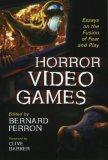 wonderful stop-motion monsters and Raquel Welsh's pneumatic breasts in One Million Years B.C. or had their gonads tickled by the stylized sex games of Comic Books (all those tight-fitting garments that reveal everything and show nothing; the vast array of phallic weapons and monstrous vaginal dimension breaches). Now the audiences that would have lapped up Raquel and her dinosaurs are immersed in far more murky territory and it is serious stuff.
wonderful stop-motion monsters and Raquel Welsh's pneumatic breasts in One Million Years B.C. or had their gonads tickled by the stylized sex games of Comic Books (all those tight-fitting garments that reveal everything and show nothing; the vast array of phallic weapons and monstrous vaginal dimension breaches). Now the audiences that would have lapped up Raquel and her dinosaurs are immersed in far more murky territory and it is serious stuff.
"Why? Because unlike the audiences for earlier adventure epics involving exquisitely beautiful women, abominable tortures,
and fantastically grotesque monsters, these players are involved - profoundly, intimately involved - in the action.
They do not sit, as I did, seven days in a row, watching every performance of One Million Years B.C. in my local cinema in Liverpool.
They are locked away in their rooms with sugar and caffeine stoked energy drinks engaging in battles with Dark Forces. This is not remotely the
same kind of experience that I had watching Harryhausen's masterpiece. These players are defining their own kind of heroism, or, more
perniciously being drawn into an identification with evil. Let us not dismiss the power of these stories too lightly. They tell lies.
The most monstrous lie, of course, is the merciless contempt that they stir up for Otherness; the ease with which something other than the human
is demonized, and reduced, and made fodder for the gun-wielding player who stands anonymously behind the screen.
"Is this not very dangerous territory?"
A Little Light In The Darkness
Foreword by Clive for Horror Video Games edited by Bernard Perron, 2009
"I write my novels and short stories as a journalist reporting what I'm seeing in my mind's eye with as much economy and
precision as possible. If I can't see it, I can't write it. The only exception to this rule are the metaphysical debates within the books,
in which characters are at liberty to postulate all kinds of challenging eccentricities that my imagination may not be able to conjure
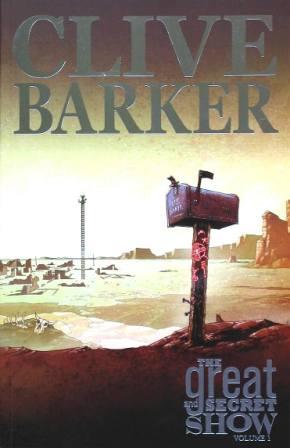 accurately.
accurately.
"But the basic point - that these big books all begin with things witnessed - remains relevant, leading on easily to the notion of
adapting my novels for the medium of the comic book, which relies upon spectacle and is not limited by budget as a movie is
limited. That is not to say that the process of adaptation is in any way easy. When Chris Ryall came to me with the notion of
adapting The Great and Secret Show for comic books, I was enthusiastic, but cautiously so. I had seen another of my large novels,
Weaveworld, violated in its adaptation many years before (through no fault of the adaptor, Dan Chichester) and the memory still
stung a little. But Chris is immensely persuasive and he was determined that the epic narrative of The Great and Secret Show could
be told in a series of a twelve issues without losing the novel's scale. When he laid it all out for me, and shared the vision, I agreed."
Introduction
Introduction by Clive to The Great And Secret Show, Part One, 24 August 2006.
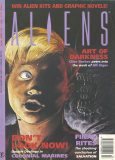
"It is Giger's paintings which are his true gift to the world of the
imagination: the creations which the Alien films for their power to
excite can but wanly imitate. To simply characterise Giger as 'the
artist of Alien' is like calling Michelangelo the set designer for the
Agony and the Ecstasy.
"The images Giger has created have a power that demands closer and
more reflective study than the sleek, slick hyperactive style of
modern fantastic cinema allows. Without such close scrutiny the
ambiguities at the heart of the work remain unexplored : the creatures
he paints are reduced to the point where all they elicit is disgust.
"I ask you, look again. Though we come into Giger's world astonished
and intimidated by its strangeness, it does not take long to learn its
codes and its iconography, and the more familiar we become with the
landscape and its inhabitants the more familiar it seems. Like all
great visionaries, Giger has no truck with superfice; he plunges his
hands into the raw stuff of our subconscious, and using methodologies
that are unique to him creates a state that is rigourous, hierarchical
and, for all its abysmal depths, inviting."

H.R.Giger's Necronomicon
Introduction by Barker, 1992 (lengthy extract republished in Aliens, Vol 2 No 21, March 1994 as Mapping The Psyche).
"This is bench-mark work, the stuff that will influence new generations of young artists, learning from the perverse beauty of Demonicsex, that comics remain the only way to feed the erotic imagination with images and words (as movies do) while still possessing the freedom (which movies deny their makers) to go wherever their creators' wild and twisted imaginations take them."
Lord Have Mercy
Foreword by Barker to Demonicsex, Vol 1.0, 3 September 2005.
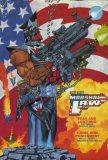
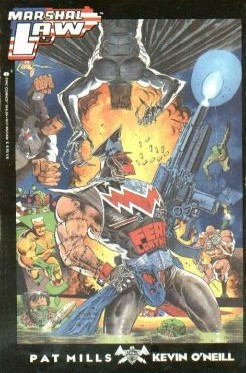
"The sadistic, sexist, brutal world of Marshal Law doesn't have this reader panting with vicarious satisfaction. O'Neill's style is anti-sensual, stressing the
absurdity of these demi-deities rather than any erotic appeal. Nor does the violence excite. This is not the Bam Pow School of Fisticuffs, in which the reader is
the hero's invisible buddy, at the heart of the battle with him. We watch the blood-letting remotely, the posture of the fighters oddly stilted, the frames rife with
repulsive detail. We close the final page disgusted and distressed.
"If none of [this] seems to be a recommendation then I heartily suggest you ask your dealer to provide something more conventional. There's a lot of it to chose
from, as long as you can tell one title from the next. Personally, though reading Marshal Law is not precisely a pleasure, it will leave a mark on my imagination
the way countless pleasures have failed to do."
Marshal Law
Introduction by Barker to Marshal Law - Fear And Loathing by Pat Mills and Kevin O'Neill, 1st May 1990.

"A child quickly learns where his or her particular power lies. For some it is simply the way they look, for others their ability to kick a ball or solve a mathematical problem. For me, from my earliest memories, it was drawing that gave me power."
Visions Of Heaven And Hell
Introduction by Barker to Visions Of Heaven And Hell, 2005.
"Like Coward, [Whale] was a self-invented upper-class Englishman, his true roots much closer to the bitter dirt of England than he wished his admirers to realise. The James Whale who directed successfully for the theatre in London and then moved on to Hollywood with apparent ease was an invention. His pictures, which mingle the stylish lessons of his theatrical origins with the influence of German Expressionist cinema, offer a host of memorable characters, but James Whale's greatest creation was himself."
Gods and Monsters
Foreword by Barker to the Newmarket publication of the Gods and Monsters shooting script, 2005.
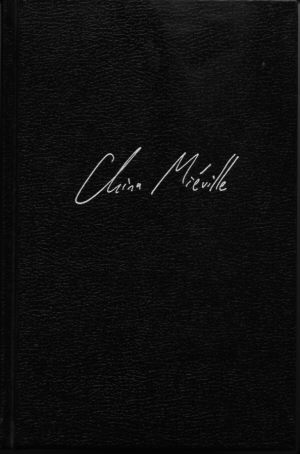
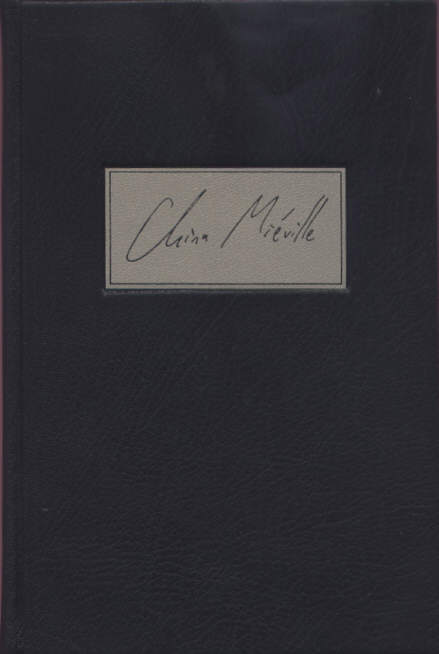
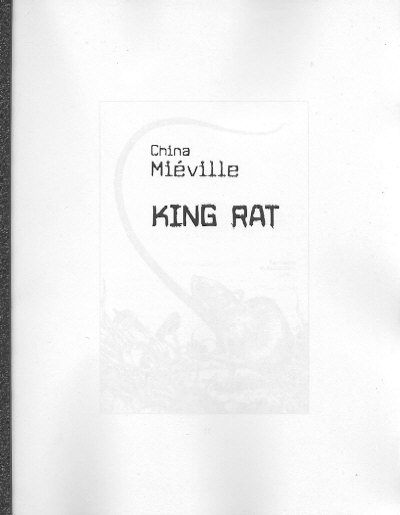
"At the heart of King Rat is not the King, I think, but the lost prince. Is there anyone amongst us who did not believe ourselves lost Princesses or Princes, trapped unnaturally in a world ruled by Them? Miéville plays this theme for all it's worth; he has the profound simplicity of the fairy tale at his elbow. Some of the fairy telling informs the narrative's solution too, and I've seen critics be overly analytical about the way the book solves itself. Damn 'em. King Rat's fine fury soars above such nit-pickers. It's not just the energy of the language or the lure of the city: it's the faith the author has in the weight of his endeavour. There's nothing twee here, nor ingratiating, nor is there any of that ironic tone that passed for sophistication one day several years ago and Miéville plunges fearlessly into the darker regions of this story."
King Rat
Introduction by Barker to the 2005 limited edition of King Rat by China Miéville, December 2004.
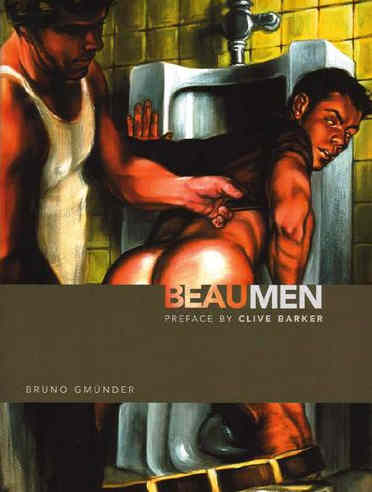
"[Beau's] technique is enviably casual; or at least looks that way. Viewing the pictures is like watching Fred Astaire dance. He makes it look effortless though of course common sense tells us that years of study and practice have gone into creating the illusion. Beau works in oil, not acrylic, and on paper, not canvas. As a painter myself I know how intractable oil paint can often prove and find myself even more impressed by what he has acheived."
BeauMen
Preface by Barker to BeauMen, 2004.
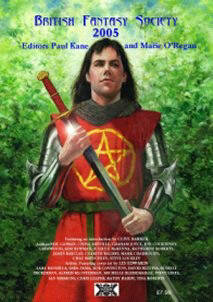
"[Norman Russell] began to give me books that he knew I would have to be familiar with if I was to survive the intellectual rigors of an
Oxford education.
"One of these books was Sir Gawain and the Green Knight. To be frank, I found it pretty impenetrable at first. But after stumbling through a few pages
some switch was flipped in my brain and the sense of it began to come clear. Though the story is quite simple, like all the best
works of fantasy, this account of Sir Gawain's adventures works on a number of levels. Of course it's a story about courage,
honor and shame. But on a profounder level it also provides us with an exquisite metaphor for the irresistible power of nature.
This creature out of the green enters into King Arthur's castle, breaking unbidden into the sophisticated world of Camelot, and
then casually throws himself open to attack. He loses his head, for his troubles, of course. Gawain chops it off. But the Green
Knight possesses the glorious immortality of the natural world. He simply picks his head up and tells Gawain to look for him in a
year's time, so that he, the Green Knight, can have an opportunity to return the blow.
"With the book read, I went back to Norman filled with questions, mostly related to the way that Gawain's anonymous author had
effortlessly married the real and the fantastic. The narrative wastes little time dwelling on doubt or ambiguity. The Knight is a
supernatural creature, pure and simple. His roots, so to speak, are deep in our subconscious, in all that our instincts tell us
about the beating heart of the world."
Sir Gawain and the Green Knight
Introduction by Barker to the British Fantasy Society 2005 Calendar, edited by Paul Kane and Marie O'Regan, July 2004.
"Ben Templesmith has provided 30 Days Of Night with a graphic style that is stripped to the essentials. All redundancies are removed. The images throw the bleak world of Barrow into soft focus in order to concentrate our attention on the eyes of the victims, on their blood, or on the delicate symmetry of a set of fangs. It's not pretty. But when was a great horror story ever pretty? I suppose there are a few decadent predators out there who do look fancy in velvet, but Steve's vampires are not of that clan. He's tapped a new vein in these pages, evoking a cold, joyless world in which appetite can never be sated and love gives no comfort, even in the bright light of day. In fact, especially then."
Cold Blood
Introduction by Barker to 30 Days Of Night by Steve Niles and Ben Templesmith, 2002.
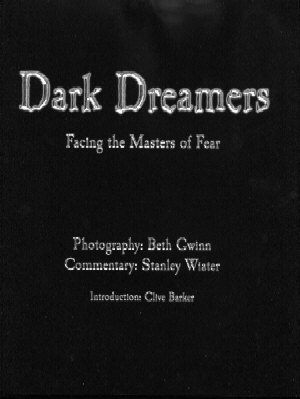
"For the most part artists and writers are not familiar to us through their physiognomy. We may not have a clue what they look like.
Yes, of course there's often a jacket photo on a book, but they so seldom say anything about the writer beyond generalities. It's
curious not to have an intimate knowledge of the faces of these women and men. After all, we know them intimately in other ways.
We've followed in their footsteps through the pages of their stories, sharing their nightmares and their dreams. We know them better
than our next-door neighbor, at least as far as their hearts go. But their faces? Blurs...
"Of course, you'll see an element of performance in several of these pictures (though clowning can also be a defense against being
clearly seen); Beth seems to be able to readily accommodate the mood of her subject. Timid or provocative, sober or reeling,
brooding or cheerful, Beth's lens sees it all with equal clarity, making no judgements, simply saying:here they are, these faces.
Now you know."
Pictures Taken Before Departure
Introduction by Barker to Dark Dreamers by Beth Gwinn and Stanley Wiater, June, 2000
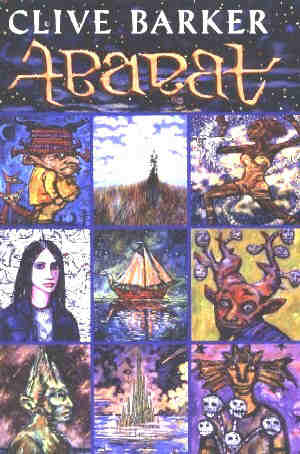
"As the [four] books progress, Candy assembles a circle of allies, uncovering a plot to blot out the Sun, Moon and Stars, and achieve a condition of permanent
Midnight. Were this to happen, then a great number of creatures that would never dare to venture into the land in the light, would be free to emerge from the Sea
of Izabella and would wreak havoc on the islands.
"In order to prevent this disaster, Candy must find the courage to face the Lord of Midnight himself, Christopher Carrion, along with his monstrous grandmother,
Mater Motley. And in confronting Carrion, she will come to understand who she really is: a revelation which will transform her own understanding of her place in
the epic events of 'The Abarat Quartet'."
Clive Barker's Notes On Abarat
Notes by Barker, Australian Advance Reading Copy of Abarat, HarperCollins Children's Books, 2002.
"For the first time in all my bookmaking years, I felt that I needed more than words to tell the story, and so I have painted three hundred oil paintings, over a hundred of which appear in this first volume. I want readers of Abarat to feel transported by this mingling of words and paintings: it will be, I hope, like dreaming with your eyes open."
Abarat
Introduction by Barker, (i) US Advance Reading Copy of Abarat, Joanna Cotler / HarperCollins, published April 2002 (ii) French first edition, October 2002, translated by Helene Collon.
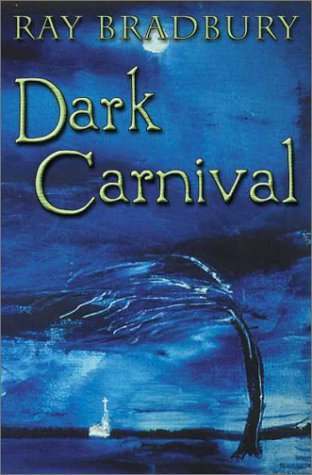
"This collection, marking as it does the first appearance of Bradbury's very singular mingling of wild, sunlit fantasies and of sombre, dusky fictions, is essential reading for anybody interested in the way the human imagination works. "Ray, though he seems to be describing the real world most of the time, is in fact subtly transforming it, turning it into a peninsula of his own personal country. He's not the only artist in my personal pantheon of heroes who does this. William Blake is, like Ray, a great maker of worlds, and though the great English mystic poet and painter is a very different kettle of visionary genius to Mr Bradbury, they are linked in my mind because I discovered them both at the same time. They were two of the guiding lights of my youth, their prose and poetry an open sesame to a world of boundless invention each wrought in a wholly unique style."
The Last Unknown
Afterword by Barker for Dark Carnival by Ray Bradbury, Gauntlet Press, 27 July 2001.
"It's one of the strange, almost magical aspects of my life as a writer
that very often the first work of creation is done, as it were,
'behind the scenes' of my conscious mind. Suddenly I will find myself
waking in the middle of the night with something on my mind that needs
to be written down very quickly before I forget it!
"That's how it was with The Thief Of Always. The story was in my head,
all complete with characters and settings, without my really planning
it. Even the first line of the novel - 'The great gray beast February
had eaten Harvey Swick alive' - was part of this strange midnight gift. And
when I began to write the book from those hurried notes I'd taken in
the state between waking and sleeping, the tale unfolded before my
mind's eye like a movie. All I had to do was to describe what I was
seeing."
Clive Barker's The Thief Of Always
Introduction by Barker to the 2002 US edition, HarperTrophy, 3 August 2001.
"What had originally begun life as an idea for a short, satiric stab
at Hollywood began to blossom into something larger, lusher and stranger;
a fantasia on Hollywood both in its not-so-innocent youth and in its
present, wholly commercialised phase, linked by a sizeable cast and a
mythology which I would need to create and explain in very considerable
detail.
"I don't doubt that this second incarnation of the book will be much
more satisfying a read than the first - which I had written almost in
its entirety before changing direction - but Lord, it was a son of a
bitch to get down onto the page."
Coldheart Canyon
Extended acknowledgements by Barker for Coldheart Canyon, August 2001.
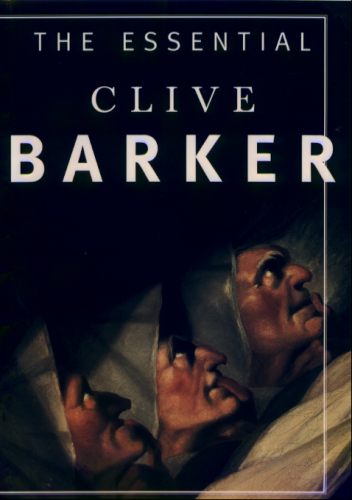
"We all live in separate worlds.
"The man watching the fire may be standing just a few yards from the
man consumed by it, but his experience of the world is utterly
different. At various points in our lives we all feel like the one
who's watching the flames; at other times, we feel like the one
burning. Then we find ourselves looking out through the waves of heat
and wondering how it's possible for anyone to laugh, or look at the
sky, or simply breathe.
"The challenge is this: how do we remember, when we're out in the cool
air, and our breath is easy, what it feels like in the fire? How do we
extend our intellects, our emotions, our sympathies - from one place
into another; in fact, into many others? This is the defining business
of the imagination: how to be other than ourselves, and in that
experience look back at what we are, and know ourselves better."
Private Legends
Introduction by Barker to The Essential Clive Barker, March 1999.
"I have one of these posters hanging on the wall just outside the
office where I am writing these words. It's a Hellraiser poster, and
it features the antihero of that series, Pinhead, looming over a
cityscape. He has two large fangs, and from his mouth hangs a tiny
human figure, clearly about to be swallowed.
There is no such scene in the movie. The image is a grimly playful
fantasia, entirely of the artist's creation. The fact that it's
painted on tattered canvas, the paint cracked and fading, only serves
to increase the potency of the image. There is a delightful mingling
of naivite and power in the rendering, like an old carnival poster
advertising something freakish.
"There is, needless to say, something immensely satisfying about seeing
an image you originated - as I originated Pinhead - reworked and
rediscovered this way. What more could any artist ask for than to find
his creation has been claimed by another culture, wholly unlike his own;
claimed and hopefully understood. The same I'm sure can be said for
all the images paraded on these posters; the zombies and the night creatures,
the heroes and the sex goddesses; all belong in some
universal tale that makes sense wherever it is being told."
Horror
Introduction by Barker in Horror section of Extreme Canvas: Hand-Painted Movie Posters From Ghana by Ernie Wolfe III, 2000.
"Horror fiction has traditionally dealt in taboo. It speaks of death,
madness and transgression of moral and physical boundaries. It raises
the dead to life and slaughters infants in their cribs; it makes
monsters of household pets and begs our affection for psychos. It shows
us that the control we believe we have is purely illusory, and that
every moment we teeter on chaos and oblivion.
"And to that list of taboos I now add another list: the forbidden
sub-strata of sexuality.The obsessions with parts and people we keep in
our private thoughts; the acts we dream of but dare not openly desire;
the flesh we long to wear, the pains we yearn to endure or inflict in
the name of love."
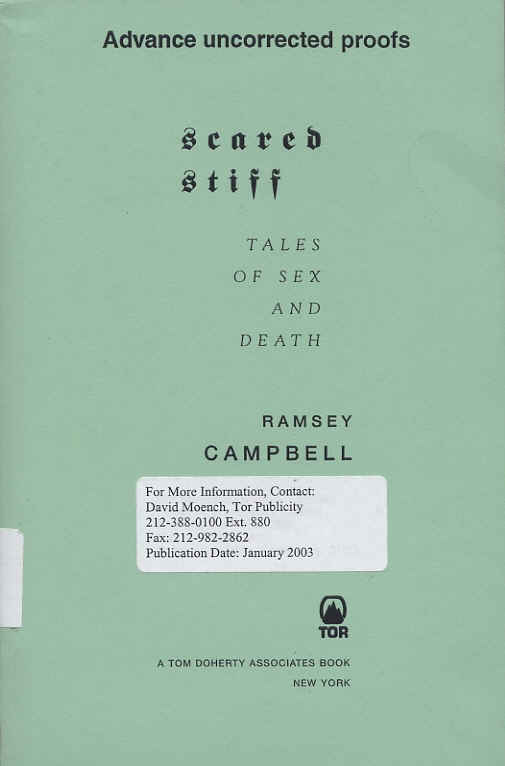
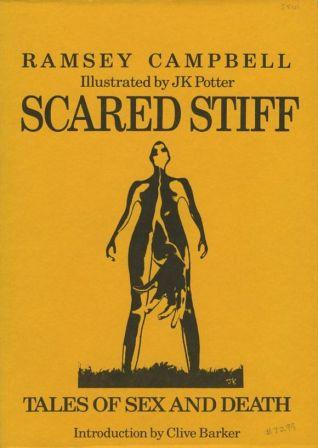
The Bare Bones
Introduction by Barker, London, 29 June 1986. (i) Scared Stiff by Ramsey Campbell, 1986 (ii) Clive Barker's Shadows in Eden.
"I had known from the beginning what the meat of the book was to be.
At the heart of the novel is the story of Faust. This tale... is one
of the great root narratives of our culture. Why does it work so well?
Because it is so human. As a species we have an enduring
fascination with the challenge of tricking our way past the guardians
in whom God put divine knowledge to play with things humankind was not
meant to know. Perhaps in our hearts it's a desire to play the Devil's
game - the damnation game - to be a fallen angel for a while
and know what it's like in his lovely, lonely pit, just so long as the
price to be paid for the deal is put at some distance.
"That, of course, is the essence of the Faustian pact: The price
must be far off. Only then will Faust's seducer, Mephistopheles,
be able to persuade his victim to sign on the dotted line."
The Damnation Game
Introduction by Barker to the 2002 US edition, Berkley Books, 17 May 2002.
"Rodriguez stages these action scenes in a hip, comedic style, the
moodier, more realistic tone of the first half of the picture abandoned
as the body count grows and the rules of combat become more rococo.
If we were disturbed by some of the earlier passages, it was because
they had some connection to the Six O'clock News, but once the dance of
the vampires begins the carnage becomes so excessive that the grimmest
moments seem playful, driven by a mixture of gore and gags that recalls
Sam Raimi's Evil Dead series. That's not the only point of reference,
of course. This is a vampire flick made by men who know the horror
tradition. Peter Cushing, Hammer's great star and (for me at least)
the definitive Van Helsing, gets a nod, so - in the sheer
relentlessless of the enemy - do Romero's zombie films, along with
films by Carpenter and Polanski. There are a host of other pleasures
besides the grue: a parade of skin-flick sex goddesses, a list speech
as sleazy as it is exhaustive, a plethora of state-of-the-screen
transformations and resurrections. There's also a complete disregard
for who survives and who goes down spurting. In truth, it's hard to
know which side truly wins the night, but who's counting?"
From Dusk Till Dawn
By Quentin Tarantino, introduction by Barker.
"We all hear the call of the dark once in a while. A siren song, inviting us to take a ghost ride into nightmare. Who knows where that ride will end? At the gates of Midian, perhaps - home of the Nightbreed. Only monsters are welcome in Midian, but then isn't there something monstrous hiding in us all? Why else are we so fascinated by the dark, and the mysteries it half conceals?"
A Human's Guide to the Nightbreed
Introduction by Barker on promotional Nightbreed pamphlet, 1990.
"The notion [of Jung's collective unconscious] appealed to me for many
reasons, not least that I could immediately conjure up its physical
analogue. It was a sea. A place
where we swim - in sleep or in some other altered state - and there encounter forms that
we then bring back to us into the waking world. Sometimes we encounter one another there.
Sometimes, we encounter the divine. We also, inevitably, encounter forces that mean us
harm. In short, the collective unconscious is another world; a world both strange to
us - filled with images remote from our domestic lives - and closer than the concrete
reality in which we live, because the door that leads into it lies inside us.
"This idea stayed with me for several years before I found an adequate way to express it.
I called the sea Quiddity, and slowly developed a mythology around it. Human beings would
enter Quiddity, the dream-sea, three times, I decided. Once when they were born, once
when they slept beside the person they would love most in their lives, and once before
they died. Three life-changing immersions in the sea of the unconscious. Three
confrontations with the secret show of our dreams."
The Great And Secret Show
Introduction by Barker, 1999 HarperPerennial edition, 12 August 1999.
"It's my pleasure to introduce you to this very special edition of
Everville.
"The Art. I first wrote about it in The Great and Secret Show where
its true nature, and purpose, remained unrevealed. Is it a force for
good, or evil? Will it turn us into divinities or madmen? The omens
are by no means clear.
"Now, in Everville, the second volume of The Art trilogy, the journey
towards revelation continues, and takes us across the divide between
the waking world and the shores of Quiddity, the dream-sea. For it's
in the depths of our imaginations that these mysteries will be solved,
in the place where all we ever were, all we are and all that we will
be, meet.
"Welcome, then, to the next stage of our dream-quest. Welcome to
Everville."
Everville
Introduction by Barker, UK Limited Edition of Everville, 1994.
"There is a wonderful casualness about the inventions in the [Arabian] Nights, a
delicious indifference to the niceties of reality that also, of course, informs fairy
tales and folklore. Nobody in these stories wastes much breath expressing surprise or
disbelief in the face of the wonders and horrors that touch their lives. They are simply
part of experience, like love, like death.
"In my mind's eye I picture my audience responding to the stories I tell with the kind of
robust acceptance of possibilities that I imagine those who listened to the original
tales of the Arabian Nights, or watched Shakespeare's plays possessed. Nobody said,
during the first act of Hamlet, 'Oh, this doesn't work for me. I don't believe in ghosts.'
Nobody - I suspect - learning Sinbad's story, remarked that giant rocs are merely legends.
You may argue that these audiences were ill-informed, that because they did believe in
phantoms and giant birds they were unsophisticated. I beg to differ. I think there was a
health and a vitality in their embracing of ideas and conventions which has been
'sophisticated' out of us."
Everville
Introduction by Barker, 1999 HarperPerennial edition, 13 August 1999.
"This book was delivered one year ago, to the day, to the Epic editorial offices. It was just before All Hallows Eve; Hallowe'en. While I make no testament regarding its authenticity, I do offer one simple warning; "From here, proceed at your own risk."
Book of the Damned
Introduction by Barker to Book of the Damned graphic novel, Volume 1, October 1991.
"The dictionary defines 'incarnation' variously as the action of being made flesh, the assumption of a bodily form (particularly of Christ, or of God in Christ) and as the creation of new flesh upon or in a wound or sore: thus a healing. I cannot imagine an apter title for this collection of plays. Story-telling has always been for me a process of putting on skins; of living lives and dying deaths that belong to somebody else. And the more unlike me I look with these borrowed faces the more interested I am to see the world through their eyes."
The Painter, the Creature, and the Father of Lies
Introduction by Clive Barker to Incarnations (see Collected Plays), 1995
"For those readers familiar with my later novels (the books categorised as fantasy) some of the thematic material in these plays will be familiar. Just as Weaveworld, Imajica, the Books of the Art and Sacrament trace the journeys taken by ordinary men and women out of their recognisable lives into worlds steeped in the strange and miraculous, so these plays carry their protagonists (and hoefully the audiences who identify with them) into places charged with magic. In two of the three, those voyagers are duly returned, albeit shaken, to the comfort of their own reality. Only in Crazyface does one of the characters escape the gravity of his situation completely, and take flight, never to return; and even here it is the image of his blind mother sitting listening to the report of her son's ascent into the clouds with which we're left at the story's close. In other words, these plays are as much concerned with the transformative powers of the journeys these characters take as with the wonderments encountered along the way. When the journey is over and the spectacle fades into darkness, the stories aim to leave their audiences a little changed. A little lighter spirited perhaps; perhaps, who knows, a little more loving?"
Laughter, Love and Chocolate
Introduction by Clive Barker to Forms of Heaven (see Collected Plays), 1996
"Like many legends, from Christ to Mickey Mouse, the story of the fool has been steadily obscured by sentimentality.
After centuries of tellings, its anarchy has been mellowed to mischievousness, its sexuality restrained to innuendo, its
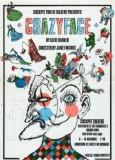 profoundest sorrows reduced to a picturesque melancholy.
"The fool is not simply a doe-eyed Pierrot, or slapstick's diversion between the lions and the acrobats. At his best he's a
creature with another version of reality; he's still in touch with his animal origins, but he has visions that make his pronouncements
seem almost angelic.
profoundest sorrows reduced to a picturesque melancholy.
"The fool is not simply a doe-eyed Pierrot, or slapstick's diversion between the lions and the acrobats. At his best he's a
creature with another version of reality; he's still in touch with his animal origins, but he has visions that make his pronouncements
seem almost angelic.
"The Tyl Eulenspiegel stories, which were the starting point for the life of Crazyface, reflect these extremes. Tyl, in his original
persona, was not above defecating in a milk urn for his amusement: he lived a short, almost angry life, being hanged (the legend
goes) for his crimes in 1350. Yet he's also pictured sitting smiling on an ass, a mirror in one hand, an owl in the other
(Eulenspiegel means Owl-Glass), an almost surreal image of a gentle idiot."
Crazy People
Introduction by Clive Barker in the Crazyface programme for performances at The Cockpit Theatre, London, 9-18 December 1982
"In the play Goya - the artist - is not only the mind in search of solutions. Others, through rebellion perhaps, or love, or constant
questioning, are also looking. And looking is at the heart of Colossus. Looking at the world in the minutest detail - sifting all the
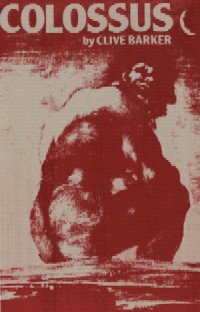 useful information we can find and analysing it with instinct and intellect wedded - this is the way, the play suggests, that we may
hope to improve our state. Others in the action watch for negative reasons: for them watching has become an end in itself, the
disease of passive observation which increasingly curses our century.
"I have attempted in Colossus to write a play about how and why an artist uses objective reality as a source for his work. It is not a
biography of Goya. It is not a history play, in which a pastiche of life as it might have been lived keeps us safe from the problems of
life as it is lived.
useful information we can find and analysing it with instinct and intellect wedded - this is the way, the play suggests, that we may
hope to improve our state. Others in the action watch for negative reasons: for them watching has become an end in itself, the
disease of passive observation which increasingly curses our century.
"I have attempted in Colossus to write a play about how and why an artist uses objective reality as a source for his work. It is not a
biography of Goya. It is not a history play, in which a pastiche of life as it might have been lived keeps us safe from the problems of
life as it is lived.
"Hopefully it will make as much sense to you if you know nothing about Goya as it will if you've read every book there is to read
about him. While I have kept broadly to the fact of Goya's life and times - his deafness, his family details, etc. - the events of the
play are entirely fictitious, a fresh dramatic reality which liberates us, as Goya's work supremely does, into an imaginative and
emotional, rather than academic, experience."
The Eye Of The Beholder: Goya And Colossus
Introduction by Clive Barker in the Colossus programme for performances at The Cockpit Theatre, London, 1-17 September 1983
"The devil, they say, has all the best tunes. Certainly his surrogates,
as they live and breathe in the pages of the Hellraiser books, have a
better repertoire of seductive songs and murderous melodies than the
forces of good which occasionally attempt to resist them...
"You're going to be meeting [the Harrowers, a] team of soul-savers in
the pages of upcoming Hellraiser books and I hope their arrival excites
you as much as it does me. I should say return rather than arrival,
for though the individuals who will take up the grim task of snatching
victims from under Leviathan's nose are new to the task, others have
trodden the infernal path before them. Those first Harrowers perished
for their heroism, but the Goddess who inspired them - Morte Mamme, the
Death Mother - is not so easily destroyed. She has risen again, and
has called a doubting few to be her legion... Maybe they can teach you
to whistle a tune the devil doesn't know. But I warn you, there aren't
many."
Hellraiser, Book 17
Foreword by Barker to Hellraiser graphic novel, Book 17, July 1992.
"There will be those amongst you, no doubt, crying shame! shame!; folks who would prefer to see Hell's
hordes go on with their temptations and damnations unopposed. To you I say: watch carefully. This
is not a battle Leviathan or its generals will meet with a simple shrug. You will see a new fire in Hell's
belly in the next few months; new venom in its machinations; new cruelty in its devices. You'll see
new Cenobites too, raised from filth and blood and rage to snuff out this little hope before it reaches
the ears of the damned.
"Will the Harrowers flourish or perish? Only the coming tales will tell. But from now on, you may be
certain that the Devil's tune will not be the only one echoing through Hell. Heroes and heroines are coming,
their hearts beating to a drum as ancient as Leviathan.
"And as powerful."
Hellraiser, Book 17
Afterword by Barker to Hellraiser graphic novel, Book 17, July 1992.
"The landscape [Galas] conjures is not one most artists would even attempt to map. Let us be grateful, then, that Diamanda's hunger for unexplored places, and her courage in the face of their desolation, has given us these unique records of those wastelands. And perhaps made it possible for the rest of us, more timid souls, to follow."
The Shit of God
By Diamanda Galas, foreword by Barker, 1996.
"In movies it is the art-house product (Fellini leads the pack) that
dares to let go of naturalism. But in recent years the most successful
comic book creators are those who have strayed furthest from the
security of the river bank, into the fury of white waters.

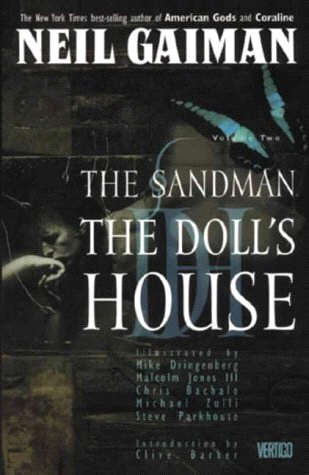 "For instance, Mr. Gaiman. In a relatively short time his imaginings
have made him the crowd's darling, but his stories are perfectly
cavalier in their re-ordering of realities. He doesn't tell
straightforward, read-it-and-forget-it tales; he doesn't supply pat
moral solutions. Instead he constructs stories like some demented cook
might make a wedding cake, building layer upon layer, hiding all kinds
of sweet and sour in the mix. The characters who populate these tales
are long past questioning the plausibility of the outrages Mr. Gaiman
visits upon normality. They were boring into this maelstrom, and they
know no other reality. There are creatures that dream of dreams; and
others who dream about the dream-pretenders. Here are dimension-hopping
entities who have a Napoleonic sense of their own destiny, occupying
the same panels as tu'penny coloured beasties who look as though
they've escaped from bubble-gum cards."
"For instance, Mr. Gaiman. In a relatively short time his imaginings
have made him the crowd's darling, but his stories are perfectly
cavalier in their re-ordering of realities. He doesn't tell
straightforward, read-it-and-forget-it tales; he doesn't supply pat
moral solutions. Instead he constructs stories like some demented cook
might make a wedding cake, building layer upon layer, hiding all kinds
of sweet and sour in the mix. The characters who populate these tales
are long past questioning the plausibility of the outrages Mr. Gaiman
visits upon normality. They were boring into this maelstrom, and they
know no other reality. There are creatures that dream of dreams; and
others who dream about the dream-pretenders. Here are dimension-hopping
entities who have a Napoleonic sense of their own destiny, occupying
the same panels as tu'penny coloured beasties who look as though
they've escaped from bubble-gum cards."
The Sandman - The Doll's House
By Neil Gaiman, introduction by Barker, 3 April 1990.
"I've never been a careerist in the sense of being able to plan my
progress. Ideas seize me and I act upon them as soon as the
opportunity presents itself. The only certainty is my continued
commitment to the fantastique. It's a mode which seems to me to
be limitless in its scope. I'd like to be able to claim some outlying
islands of other genres for its empire in the coming years, but I can't
see myself becoming a purveyor of mainstream fiction. Whether I pen
erotic stories, or film a musical, there will always be an element of
the fantastic in what I do."
Shadows in Eden
Afterword by Barker, June 1989.
"If the creature they have imagined in their mind's eye is made to
breathe on the cinema screen, something wonderful - dare I say,
godlike? - may be achieved. In the collective mind of the audience, a
new lifeform has been born. It may well be a monstrous genus, but I'm
sure you're not expecting me, of all people, to make any apology for
that. The monstrous has as much claim to our fascination as the so-
called beautiful; we may in truth learn more from the former
than the latter. And have no doubt about it, when the monster makers
are successful they haunt us with creatures that will lodge in our
psyches until the day we die. That is the true reward of their
passion and patience."
Men, Makeup & Monsters
By Anthony Timpone, foreword by Barker.
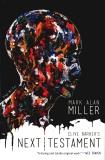 "God is all in the mind, however many times we're told to believe otherwise. Pernicious
men tend to empower the greedy preachers and obese systems of theology that create false gods.
That's not what we're about. Wick is a monster. Plainly evil. That's why the tale we're telling here is
of gods that must fall, so that we may know them as the fictions they are and go on our way
unburdened by absolutes."
"God is all in the mind, however many times we're told to believe otherwise. Pernicious
men tend to empower the greedy preachers and obese systems of theology that create false gods.
That's not what we're about. Wick is a monster. Plainly evil. That's why the tale we're telling here is
of gods that must fall, so that we may know them as the fictions they are and go on our way
unburdened by absolutes."
Next Testament
By Mark Alan Miller, foreword by Barker, February 2016.
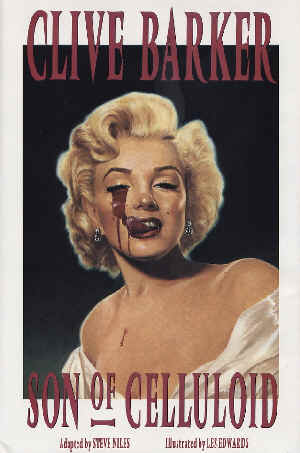 "The combination of grim imagery and blatant technicolour glamour which is so much a part of the original story is very much intact in
this rendering. This is a very difficult story to adapt, because it requires a full and thorough knowledge of movie devices as well as comic
book devices. I think that the skill with which Les Edwards and Steve Niles have applied those devices is brilliantly on target and immensely
entertaining.
"The combination of grim imagery and blatant technicolour glamour which is so much a part of the original story is very much intact in
this rendering. This is a very difficult story to adapt, because it requires a full and thorough knowledge of movie devices as well as comic
book devices. I think that the skill with which Les Edwards and Steve Niles have applied those devices is brilliantly on target and immensely
entertaining.
"Son of Celluloid is a wonderful compendium of movie genre quotes and little in-jokes. It's something you want to go back to a second and
third time to find the things Les has buried in the frames. The little portraits, asides, and witticisms he's hidden in his paintings make this
a rewarding read even on the second or third time."
Son Of Celluloid
Introduction by Barker on the inside front cover of the US hardback version of Son of Celluoid, 1992
"Here were talents that used all the strengths of the medium - its ability to synthesise disparate story elements in a single page (sometimes a single frame); its ease of tripping from stark realism to hallucination and back in moments; its ability to create images that would be financially and practically impossible in any other art form; its accessibility; its power to subvert - here were those strengths married in stories of immense manipulative skill, and not a little poetry. Stories which didn't reduce psychology to fake simplicities, and which were never afraid to present metaphors for the darkest elements of our collective soul. I walked there content. More than content, ecstatic. In what other comic book would I find a monster capable of such radical philosophies; or embodiments of evil as chilling as anything I'd seen on a screen or printed page; or rhyming demons; or love between a plant and a lady? I ask you, once addicted, where else could I go for a high like that? Swamp Thing was a joy on first reading, and it's remained a joy."
Swamp Thing
Foreword by Barker. (i) Swamp Thing Volume 2 (reprint of Saga of the Swamp Thing nos. 25 - 28), May 1987 (ii) Clive Barker's Shadows in Eden.
More introductions...



